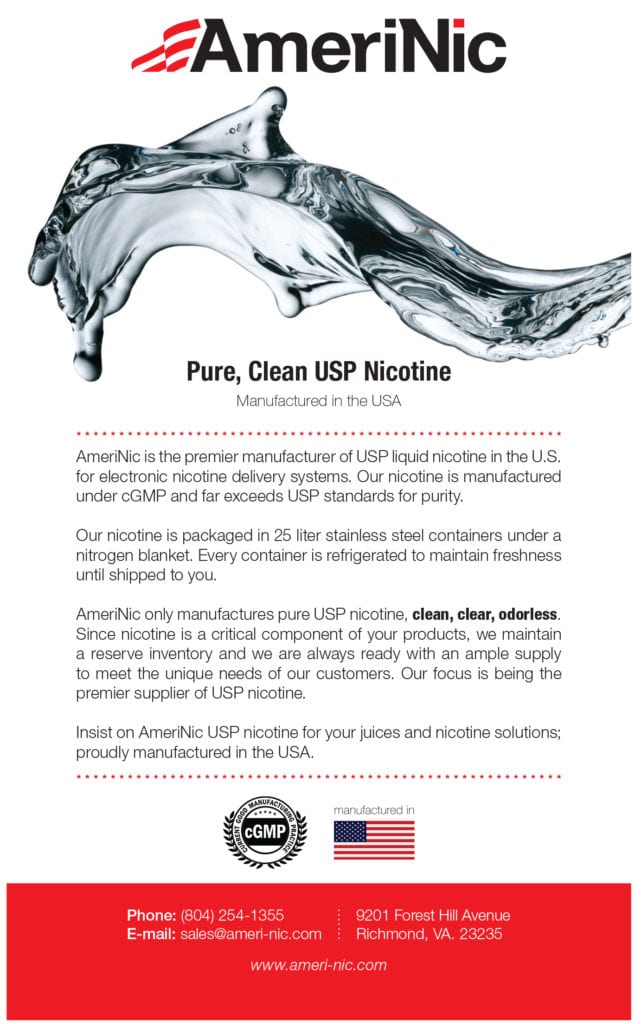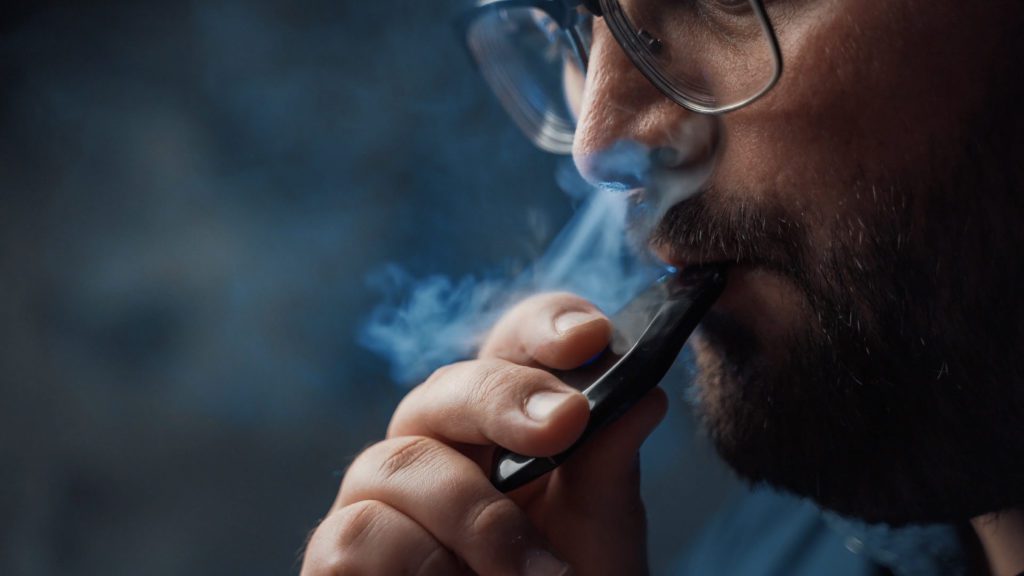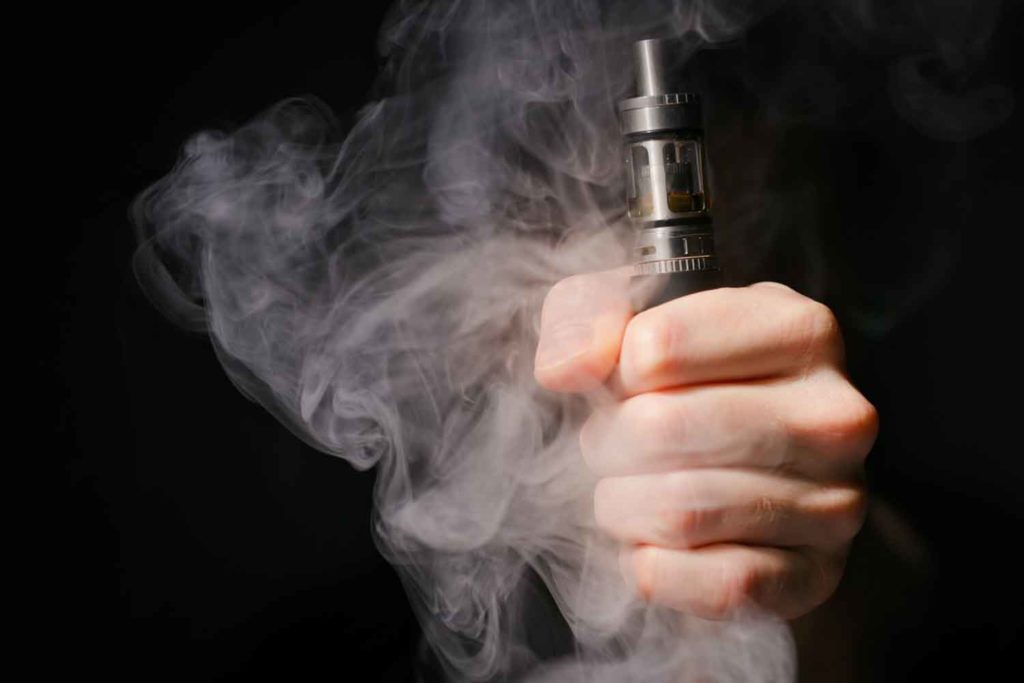
Tobacco harm reduction (THR) took center stage during this year’s GTNF conference in Seoul.
By VV staff
Nearly 300 delegates from around the world gathered in Seoul for the annual Global Tobacco and Nicotine Forum (GTNF) from Sept. 19 – 21. The delegates encompassed a variety of backgrounds including public health professionals, consumer advocates, financial analysts, and prominent regulators such as Brian King, the director of the Center for Tobacco Products at the U.S. Food and Drug Administration. This year’s theme was “Change the Conversation, Change the Outcome” which promoted the open exchange of information and ideas between public health experts, government representatives, the industry and investors.
Attendees of GTNF discussed several issues currently confronting the nicotine industry, with a special focus on lessening the harms brought on by tobacco use. Behind the success of the GTNF is a strong belief that deepening the conversation about tobacco, nicotine and public health can lead to more informed views and decisions by all stakeholders. Previous events took place in Washington DC (2022 and 2019), London (2018); New York (2017); Brussels (2016); Bologna (2015); West Virginia (2014); Cape Town (2013); Antwerp (2012); Bangalore (2010); and Rio de Janeiro (2008). The following stories are a small selection of the keynote speakers and panels presented during the GTNF 2023 event.
Keynote: Eve Wang, executive director of Smoore International and vice president of Shenzhen Smoore Technology Co.
 The vaping industry is young at only 20 years old. However, Eve Wang, executive director of Smoore International and vice president of Smoore Technology, said the industry isn’t going to get much older if it doesn’t find a way to balance innovation and social responsibility. Wang should know. She has been in the industry for more than 17 years.
The vaping industry is young at only 20 years old. However, Eve Wang, executive director of Smoore International and vice president of Smoore Technology, said the industry isn’t going to get much older if it doesn’t find a way to balance innovation and social responsibility. Wang should know. She has been in the industry for more than 17 years.
“We are at a very critical path for the vapor industry,” she said. The vapor industry has grown rapidly over the past 20 years, with large growth in the first 10 years followed by the past 10 years seeing more regulation in markets like the U.S., Europe and China as products have evolved to be more compact and portable, usability has improved with technology evolution, open systems have evolved to pod mods and disposables have grown in variability.
Wang cited Frost and Sullivan data from March of this year, which showed that as of last year, the vapor industry made up a $52 billion dollar market, nearly double what it was in 2018. “There is no doubt the market is fast growing with huge potential,” she said.
With large growth comes media attention, as Wang noted, highlighting headlines that called for bans and restrictions, overwhelmingly regarding disposables.
She then posed the question “What can we do for sustainable growth?” She broke this up into two categories that Smoore uses to address this issue: consumer experience and environmental impact, what she called “vaping efficiency.”
“Vaping is not perfect,” she said. “It’s far from being perfect. Yes, it’s new, it’s complex.”
To address this, Wang explained that Smoore looks at it as two major aspects—atomization efficiency and power efficiency, and each aspect has a different approach. Without going into minute detail, she described atomization efficiency as improving the utilization of e-liquid and power efficiency as increasing energy density and reducing battery size.
“Do we have answers to all the challenges?” she asked. “I’m afraid it’s too early to tell. And if I may be the real Eve, I would say, no, we don’t have the answers.” She urged the industry to keep innovating and for every player to take their responsibility seriously.
“As long as the conversation goes on, we are confident that together we can make the best outcome. It could be this year; it could be next year; it could be in the next five years.”
Keynote: Brian King, Director of the U.S. Food and Drug Administration’s Center for Tobacco Products

When Brian King speaks, people come to listen. The U.S. Food and Drug Administration’s Center for Tobacco Products (CTP) director’s keynote address was easily the most attended session of GTNF 2023. King’s speech served as an overview of the current state of the CTP and an outline of the center’s main priorities over the next few years.
King said that the CTP has made considerable progress in reducing combustible cigarette smoking in the United States, which he contends as one of the most remarkable public health achievements of the past century. He hopes that those declines continue, given that “we do know” that combustible smoking is responsible for the overwhelming burden of death from using combustible tobacco.
Tobacco use continues to cost the U.S. government a considerable amount of money—to the tune of $600 billion per year from both direct healthcare costs and lost productivity, according to King. He said there are important human health benefits as well as financial benefits for regulators to continue to focus on reducing combustible use in the United States. As a part of this focus, the CTP is continuing to make inroads when it comes to premarket tobacco production application review.
“As folks are aware, we do have a new director of our office of science who has jumped in headfirst to continue to fiercely lead our 550-plus scientists on application review …. We have processed 99 percent of those and continue to finalize the remaining 1 percent. I’m hopeful that in the coming months and years, we will get back to what was intended to be a premarket approval process,” said King. “In the meantime, we have authorized 23 e-cigarettes, all tobacco flavored. So, it is possible. We have had successful authorizations. But again, I can’t reinforce enough the importance of providing that sound and robust science to inform on potential authorization.
“And it is possible, as you can see. There will be more authorizations in the future, but it’s important that we have that science to support those decisions. As I noted earlier, we also continue to fold in the nontobacco nicotine work into our broader portfolio around regulation. We did receive a million applications, which I don’t think anyone anticipated. I will say that we are making great numbers. We are 99.9 percent through with the review of those. I will say that 100 percent is very imminent.”
King said that when it comes to products that are illegally on the market (having received a marketing authorization and are not currently under review by the CTP), the CTP is mindful of the importance in exercising all authorities that it has to ensure that people are complying with the law. He said that the FDA has given retailers the information they need to comply with the law through a list of authorized products (the 23 products that have been authorized for sale). The CTP also continues to ramp up efforts in terms of training, education and outreach across the supply chain, particularly to retailers.
“We also continue to do surveillance inspection investigations. This is something that occurs on a daily basis. We have arrangements with all 50 states and territories to continue to do investigations. We have issued many warning letters for flavored disposable e-cigarettes, which we know are particularly popular for youth,” said King. “There’s been a variety of blitzes that have occurred monthly throughout the summer. I will say there are more to come. We are going to continue to conduct those blitzes and making sure that we are routinely monitoring, particularly with a focus on those products that we know have high youth appeal.
“On balance, we are also continuing to do work around issuing import alerts. I was a little tickled by all the attention that the import alert on Elf Bar got. That’s nothing new, folks. We’ve been doing that for many years. It was suggested it was something seismographic, but we’ve been doing import alerts for quite some time. And we do use those as, again, another tool in our toolkit to make sure that we are addressing not only the products that are already in the country but preventing illegal products from entering the country.”
As of Sept. 31, the FDA has issued over 1,200 warning letters for online investigations. For manufacturers, the CTP has sent more than 800 warning letters, with more than 750 letters for e-cigarettes. Beginning earlier this year, the FDA also issued the first civil money penalties against manufacturers for violations for illegal e-cigarette sales. He said civil money penalties will remain a part of the CTP’s tools to combat illicit sales.
“We also issued the first six injunctions in coordination with the Department of Justice. I got a lot of flak for that as well about enlisting the Department of Justice. And I will remind folks that the FDA doesn’t have an independent litigation authority. If folks do not comply with the law, we will escalate further as has been evidenced by these actions, which again are going to be part of our broader portfolio moving forward,” said King. “Everyone is going to be held accountable across the supply chain. We do want to make sure that we address the bad actors in a meaningful way. We also continue to pursue no tobacco sale orders among retailers as well. This has traditionally been issued for underage sales. But again, we’re committed to using the full scope of our authorities granted through Congress.”
King added that education is also a priority for the CTP. The center is ramping up efforts to address misinformation in the continuum of risk for nicotine products. He mentioned that he recently wrote a commentary where he highlighted the importance of opportunities and considerations for addressing misperceptions in nicotine. “There is science that exists in that there are misperceptions around the continuum of risk and also nicotine. And so, we do have opportunities that are present, but we have to follow the data-driven pandemic-based approach,” he explained. “That said, I’m putting my money where my mouth is …. We’re working with the National Institutes of Health for a funding opportunity to get more data on public health communication messaging about the continuum of risk.
“And as noted in that funding announcement, we’re looking for data both for the target population, which is called smokers, but also unintended populations, particularly youth. This is several million dollars on an annual basis, and we look forward to that kickstarting and getting data to inform our work.”
King said the CTP will also continue to gather input from the industry and the public. The CTP is creating a new office within the Office of the Center Director and is looking to hire a new director for Policy and Partnerships. “That posting is public,” he said. “And I’m looking forward to seeing those who have applied and getting someone in that seat to meaningfully oversee the product regulation portfolio across the center, particularly as we get that strategic plan in place.”
During the closing of his address, King said that he continues to be big on communication and stakeholder engagement. He expects to provide the industry with more opportunities for communication with the CTP. “I know that you’ll see in the future an evolution of our messaging. Both through our press releases, our social media and our [overall] messaging to make sure that we are clearer, simpler and more digestible,” he said. “I’ve been a bureaucrat for many years, but that doesn’t mean that I can’t communicate effectively with the general public. I think we can do better. I know we can do better.”
Panel: Innovating Products for the Future

Discussing the future of innovation in nicotine products is complicated. The industry is innovating at lightning speed, especially in batteries and atomization. However, manufacturers don’t often want to discuss innovations in progress because competition in the next-generation nicotine-delivery segment is fierce. It’s not uncommon for a company to launch a new innovative design only to see its IP stolen and used in counterfeit products.
During the panel “Innovating Products for the Future,” moderator Eve Wang, executive director of Smoore International and vice president of Shenzhen Smoore Technology Co., questioned five industry experts about how they imagine the future of the vaping industry. The participants agreed that innovation would continue boosting the harm reduction potential of next-generation nicotine-delivery products. Surprisingly, they all willingly shared interesting insights into new product innovation.
Tao Cui, director of innovation, strategy and compliance at Innokin Technology, said that future vaping products will likely be more individualized, more efficient and more intelligent. He also said that products will continue to become less harmful. He said the heating element is especially an area that will see more innovation.
“In a perfect scenario, you can control the temperature as low as possible and also precisely control it. And, if you have a much, much less harmful substance, we combine both together, then we have a less harmful product,” he said. “In the future, I would say the products will be more individualized because no one product fits 1 billion people. In the future, your product may adapt to your habits. The product may know if you need more [puffs] in the morning, in the afternoon, today or tomorrow.”
Cui outlined some potential solutions for sustainability-related issues, including the use of research and development. He proposed that countries that have successfully controlled youth usage could offer insight; they could accomplish this by better regulating flavor names and packaging.
James Kuang, chief scientist and head of the Life Science Institute at ICCPP, parent to Voopoo vaping products, stated that the innovation of products is needed to balance user experience, harm reduction and environmental protection. “Yes, we should develop some [better batteries] and [e-liquid bases] for that. “We talk about the effective battery …. Can we do something for our environment by developing different [e-liquids]? I say if we can develop some new type of [e-liquid base] … for example, can we use some nature-sourced alcohol? …. Another solution, I think, is a water-based solution. In my opinion, a water-based [solution] may be the best product for the future.”
Fadi Maayta, president and co-founder of Alternative Nicotine Delivery Solutions (ANDS), stated that the next stage of innovation should be aimed at protecting consumers—especially nonsmokers and ex-smokers—and youth. He noted that it was the responsibility of the industry to ensure it was on the right path to responsible growth. He said that artificial intelligence (AI) could play for both the industry and regulators by helping to better analyze data concerning consumers and product use.
“I know many companies that invested in applications to link [AI] to the device to tell the consumer how many puffs they took, what’s the health risk. All these apps failed. I don’t see consumers really using it, to be realistic,” said Maayta. “It will help consumers to get more data. It will help companies and factories [know where] to locate and know how to get the right product for the consumers through using that engine but also externally for the regulators and policymakers to get data about these products. It might help in tracking as well, track and trace for the product.”
When it comes to eco-friendly products, Maayta claimed that a rational vision of environmental sustainability involves four distinct pillars. The first pillar is the product. Manufacturers should use the right elements … cardboard, biodegradable silicon and biodegradable plastics. The second pillar is showing that your claims of eco-friendliness are provable—that they can be substantiated.
“If you want to claim that your product is recoverable and recyclable, and your product can be recycled to 99 percent, whatever—you [had] better be careful. You are in a very controversial industry, and every word will be tracked,” he said. “You better [be able] to substantiate every word, every percentage, everything you say about the recyclability and the probability of the product.”
The third pillar is that if you market an eco-friendly product, you need to have a program to support recycling. The collection of these products is important. “Make it simple … because consumers need simplicity,” he said. “You used to have a cigarette and a lighter. That’s it. You are giving them an electronic device. They don’t want to have a headache there.”
The fourth element is regulation. Maayta said regulators should be involved in investing in approving sustainable products and possibly incentivizing recycling programs. He criticized manufacturers that aggressively market products that appeal to youth. He criticized regulators for not doing more to remove the “bad players” from the market because it’s leading to good manufacturers being replaced by the black market.
Cherry Pan, managing director of consumer and marketplace insights at Altria, said that as the industry moves toward more “eco-friendly” products, the term needs to be better defined. Pan said that the environment should be a concern for all manufacturers. She also suggested that manufacturers could play a more innovative role in the design of eco-friendly products.
“First, how to define eco-friendly … that means you’re 100 percent recycled or 50 percent recycled or 30 percent? …. Or does it mean that we use vaping products that are less harmful than cigarettes? This also means it’s eco-friendly,” Pan explained. “We will make about 150 to 200 new products every year [not necessarily that make it to market] with our army engineers. We have about 150 engineers. So we also must make products which we [consider] eco-friendly because we can recycle it, maybe 70 [percent] to 80 percent. We use some degradable materials. The percentage we use is higher [than many other products]. We want to make removable batteries.”
Ryan Selby, CEO of Generative AI Solutions and executive chairman at The Modern Nicotine Co., said that innovation will not bring about a one-size-fits-all solution for consumers. It’s going to take a comprehensive approach to create choices for consumers through innovation. However, he doesn’t know what the next best thing is.
“I do think we need to keep our eyes on the future and look at there’s some big changes coming down in terms of the virtual and augmented reality experiences,” Selby said. “In the oral space, looking at opportunities for creating more personal nicotine experiences that have a lower [third-party] impact as well as lower the impact on the environment.”
Selby also said that AI could be beneficial in providing consumer insight and in helping find innovative ways to restrict youth access. He said AI can aid the nicotine industry by helping to reduce harm by analyzing data. Regulators may even be better able to understand the consumer experience.
“I think this is a tremendous opportunity for AI in this space to help feed in massive amounts of data set and tease out some of these interactions between devices … looking at opportunities for combining substances and devices in a way that can reduce the harms associated with [use],” said Selby. “I think there is tremendous promise with large data sets and the ability of AI to tease out some hidden secrets in there that can help us to continue moving in the right direction.”
Panel: Talking Nicotine: Perception vs. Reality

From a public health perspective, the misperceptions and misunderstandings surrounding nicotine are incredibly frustrating, according to David Sweanor, adjunct professor of law at the University of Ottawa, who moderated the GTNF panel on the public perception of nicotine. Science has proven that it is the delivery system [combustible cigarettes], not the nicotine itself, that causes the deadly diseases suffered by cigarette smokers.
Sweanor said Sweden was an excellent example of a country where the use of different delivery systems, such as snus, led to massive decreases in the number of combustible cigarette smokers. Sweanor said it would be a major benefit to public health if the industry would or even could do more to educate consumers, public health groups and legislators about the facts. He emphasized that people can only make as good a decision as the information available to them allows.
“We already knew from the work of Michael Russell that people smoked to get nicotine, but they died from the smoke. Nicotine wasn’t the problem. It was the delivery system that was the problem,” Sweanor explained. “We’ve known that for 50 years. And we’ve seen examples from places like Sweden where people can move to an alternative product and have disease rates that are massively lower than what you see elsewhere. In fact, looking at the long-term users of a product called snus, it is very hard to find anything to distinguish their disease risks from those people who don’t use any tobacco or nicotine product at all.”
The first speaker was Carolyn Beaumont, a general practitioner, educator and founder of SmokerHealth Telehealth and Medical Nicotine Scripts who for the last three years has been prescribing vaping products to cigarette smokers in Australia. She said that there is an outpouring of need and frustration and even fear from the many smokers that she works with. Under Australia’s strict vaping rules, vaping products are only allowed through prescription, and there are only a few products legally allowed to be prescribed. She presented several quotes from former smokers showing how vaping had changed their lives for the better.
“They really want their stories to be heard …. Smokers want to be heard—not judged—supported, and advocated for. And as I said before, they’re also very fearful that if they can’t get their vape, they will return to smoking, and that seems true as well,” said Beaumont. “I guess for those of you who are not sure how successful vaping is in [supporting] smoking cessation, it’s very effective.”
There were several quotes presented, including one from a patient who said there was a history of cancer in their family. “I am very reluctant to take up smoking again. I haven’t touched a cigarette in close to three years now, and I feel wonderful,” the patient stated, according to Beaumont. “My sense of taste and my smell has returned. Fitness has improved. So, I thank you for the service you provide for us ex-smokers to be able to vape instead of [smoking] those dirty cigarettes.”
The next speaker, Delon Human, president of Health Diplomats, a healthcare advocacy group, said that misperceptions surrounding nicotine were causing people to die. “At the heart of nicotine misperception lies an issue that we are wasting unnecessary lives,” Human told attendees. “We are allowing the misperception of nicotine to lead to disease. And that is a time that we absolutely have to take hold of the stakeholders, who can change those perceptions.”
He also stated that the World Health Organization’s failure to differentiate between tobacco and nicotine, combustibles and noncombustibles, has caused the spread of misinformation among the organization and government and nongovernment organizations it influences. “If you read WHO documentation …. On the one hand, nicotine is part of the WHO list of essential medicines. Nicotine as part of nicotine-replacement therapy as prescribed by physicians and health professionals for smoking cessation,” said Human. “And on the other hand, there’s an all-out war on nicotine. What has happened over the years, over the last 50 years, is that the so-called war on tobacco has changed into the war on nicotine.”
Human also noted that there is a serious amount of misperception surrounding nicotine among physicians and consumers. He mentioned a recent study from the Foundation for a Smoke-Free World that found that on average, nearly 77 percent of doctors mistakenly believe nicotine causes lung cancer, and 78 percent believe it causes atherosclerosis. While on average 87 percent of doctors at least moderately agree that helping patients quit smoking is a priority, lack of training and nicotine knowledge adversely impacts quitting and harm reduction advice, according to the study.
“It found that 58 percent of those respondents thought that [nicotine] caused cardiovascular or heart disease, which again shows you that the level of misconception is not only dangerous, it’s sick …. It’s 2023 and so simple of a situation, but suddenly physicians have a complete misconception of what nicotine is,” he said. “In our own study in 5 countries, we [found that among] GPs [general practitioners], there was a persistent belief that nicotine is the most awful aspect of smoking. Nicotine causes cancer, and nicotine causes heart and lung disease.”
Human pointed out the positive outcomes of correcting misconceptions about nicotine, including improved health for smokers and lower smoking rates. He proposed that medical professionals should receive new training on the effects of nicotine and the advantages of tobacco harm reduction. Human said that companies should also refrain from marketing to youth and keep up with the research and development of new reduced-harm products.
“In terms of physicians, what can they do for misperceptions to be corrected? No. 1, training needs to be updated to the 21st century. Doctors need to know that nicotine does not cause cancer. It’s a crime for doctors to think that nicotine causes cancer or heart disease or lung disease in a way that they perceive it now, so correct the training,” he said. “No. 2, make sure that doctors understand what harm reduction is. Harm reduction is really part of everyday medical life. That’s what we do in medical practice. You’re trying to reduce the harm.”
Hiroya Kumamaru, cardiovascular surgeon and vice director of AOI International Hospital in Japan, said that in his country, there is also a wide misperception among physicians that nicotine is harmful. He argued that the industry needs to think about how best to educate regulators on understanding the effects of nicotine and the risks of different delivery systems. “Many, many … GPs are thinking that nicotine is quite harmful itself [in Japan], and we have to educate them somehow. Thinking about how we can [address] this issue, I tried to have a small meeting in the Swedish embassy about four years ago to educate not only physicians but also media and governmental officers to understand the concept of harm reduction in tobacco, in smoking,” explained Kumamaru. “But it was still difficult because some of the physicians, even [ones that] were working in a university hospital or working in the Ministry of Health, were saying that smoking is a sin …. They didn’t care about the difference [between] vapor and cigarette smoking. Because they say nicotine drug dependency is a very bad agent. We have to think once more to educate these people to understand.”
Kumamaru said Japan has seen a historic decline in the number of combustible smokers because of the rise of heated-tobacco products. He said more than half of the combustible market has disappeared in just a few years. He also agreed that the industry could accomplish more if more were done to battle misinformation.
“We’re still stuck with this problem of it. People and regulators can only make as good a decision as the information available to them allows us. And people believe that using nicotine is about sin rather than about health. If people don’t understand that [combustible cigarettes, not] nicotine causes cancer, what can you do? …. Millions of Americans who are able to move between the [various harm reduction] products never had the information that one product is very likely to kill you and [that] the alternative product is massively less hazardous.”
Mohamadi Sarkar, a fellow of scientific strategy and analysis and regulatory affairs at Altria Client Services, told attendees that the science on nicotine is not new. He said that even though many mistakenly believe that vaping is just as dangerous or even more so than smoking combustible cigarettes, there is a plethora of evidence to show that vaping contains fewer harmful chemicals than cigarette smoke.
“We often hear that ‘Well, these products have not been on the market long enough, so there is no long-term epidemiology.’ We don’t need it. What we do know is that cigarettes have 70,000 chemicals. Seventy of them are carcinogens and linear, cardiovascular and respiratory toxins,” he explained. “On the other hand, smoke-free products like e-vapor or [heated-tobacco products] are nicotine-positive and have far fewer chemicals.”
In the end, all the speakers agreed that the industry could do more to battle the misinformation surrounding reduced-risk products. The vaping industry needs a unified voice. “We need unified goals for all the stakeholders to communicate …. We know that education works. Education has changed perceptions,” said Sarkar. “We need immediate action.”
Panel: Reasonable Responsibility

Youth use is everyone’s responsibility. It’s also the name of the GTNF panel that focused on how to balance preventing youth use with helping combustible cigarette smokers move toward less risky nicotine products. The panel’s moderator, Stacy Ehrlich, partner at Kleinfeld Kaplan and Becker, encouraged panelists to debate whether abstinence is a realistic or appropriate goal when attempting to combat youth use.
“Hopefully, speakers will address that and whether and how to communicate with youth and children about relative risks and progress. I think an interesting question is: Are youth an unintended population for these communications?” said Ehrlich, referring to the U.S. Food and Drug Administration’s acknowledgment that e-cigarettes are less harmful than combustible cigarettes. “Should we be communicating with underage individuals about consumer risk?”
All the panelists were given the opportunity to make a short presentation. Jasjit Ahluwalia, professor of behavioral and social sciences and professor of medicine at the Center for Alcohol and Addiction Studies at the Brown University School of Public Health and Alpert School of Medicine, said that tobacco addiction is a pediatric disease and noted that many diseases resulting from tobacco use were effectively human caused, such as chronic obstructive pulmonary disease, as 95 percent of cases were the result of tobacco use.
He also stated that youth use of tobacco and nicotine was unethical as young people are uninformed consumers. However, he noted that communicating risk to this group was complicated. He said that tobacco prevention campaigns are key.
“This is something that we know [is] important to effectively educate youth,” said Ahluwalia. “I’m mindful of the importance of the issue of spillover … this is, again, a careful area where I think it’s important that we’re mindful of what the impact is on the intended population and mitigating risk for the unintended population, which in this case, I believe is adult smokers that you want to make sure that they’re not scared away from using an e-cigarette that could potentially be beneficial for them to transition completely from combustibles.”
Ahluwalia also highlighted the vast amount of misinformation that had been communicated through anti-vaping/smoking campaigns, noting the role of the media in misrepresenting the science behind vaping products. He stated that the industry needed to focus on innovating safer and better products. He also called for the FDA to approve new smoking cessation medications. Lastly, Ahluwalia stated that a goal of zero youth use was unrealistic and unreasonable.
Brian King, director of the FDA Center for Tobacco Products, explained that youth prevention continued to be a critical part of the FDA’s portfolio since nine out of 10 adult smokers started smoking below the age of 18. He noted that the youth were using a variety of different products, with the use of e-cigarettes being particularly prominent.
“Youth prevention is a key component of FDA’s portfolio … we do see kids using a variety of different products. But right now, the focus is primarily on e-cigarettes,” explained King. “We’ve seen an evolution within even that product class as well, which I think is important for us to consider as we talk about what the inherent risks of these products are, particularly when it comes to dependency. That said, although we’ve seen declines in e-cigarette use, which again, we’ve noticed, is a good thing, among the kids who are currently using e-cigarettes, we’re seeing increased signs of dependency.”
King said the FDA is held by the standard of being “appropriate for the protection of public health.” This is not like the other centers at the FDA, such as the Center for Drug Evaluation and Research (CDER), which has a “safe and effective standard.” In therapeutics, the CDER wants products to be safe for people to use but also effective at treating the ailment.
“When it comes to tobacco products, the U.S. Congress has given us appropriate for the protection of public health, where we have to weigh the benefits and the risks. That said, the risks are typically focused on youth initiation. And we have made decisions based on that,” King told attendees. “The primary reason you’re seeing a variety of negative actions that have been taken on e-cigarettes is because of the prominent youth use of these products. It certainly is possible to mitigate that risk. For example, we know that youth have very little [interest in] tobacco-flavored e-cigarettes, which are the products that have been authorized to date because that benefit of adults has been able to outweigh the risk of kids.”
Colin Mendelsohn, general practitioner and founding chair of the Australian Tobacco Harm Reduction Association, said that current vaping policy is largely driven by fears over youth vaping. The scientific evidence of vaping is being overlooked. He stated that children should not vape or smoke; however, he acknowledged, it is inevitable that some will. Mendelsohn argued that most youth vaping was experimental, with frequent vaping being rare.
“I think policy around e-cigarettes is largely driven by youth [and] flavor. And I think it should be driven by the evidence, not by emotion and moral values,” he said. “What I’m going to talk about is actual evidence, or at least the best evidence we have today. Kids shouldn’t vape or smoke. They shouldn’t be using alcohol or useless drugs. Of course, they do lots of things they shouldn’t do.”
Mendelsohn said his research showed that only 3 percent of children who had vaped were frequent vapers, with half of those also being smokers. This evidence, he said, showed that vaping was not a gateway to smoking. He said that the opposite was true, and vaping was diverting kids away from smoking combustible cigarettes.
“I think we all agree that vaping is not a significant gateway to smoking. If there were a significant gateway, we would expect to see smoking rates going up. And of course, they’re going in the opposite direction. In the U.S., when vapes became popular, smoking rates continued to decline. In fact, they declined faster than they ever had compared to the historical period before 2013 since vaping became available.”
Stefanie Miller, vice president of external engagement at Juul Labs, said one of the reasons why she wanted to join Juul Labs is that she gets to say that Juul has a problem with youth use. “We don’t need to skirt around that. So I’m going to talk to you about what this company has done to successfully deal with youth using the product,” she said. “We took what we consider a three-pillar approach … it has been a productive initiative that we’ve taken …. It’s limiting underage appeal, restricting underage access and enforcing against third parties, enforcing against illicit products.”
Miller said Juul Labs is also using technology and innovation to help in the company’s fight against youth use. However, Juul Labs is also looking at how initiatives that are put in place to prevent youth use impact adults making the switch from combustible cigarettes. “We’re also considering what these interventions would do to make it potentially more difficult for an adult smoker to have access to a less harmful product, which is not the goal of our company,” said Miller. “We’re trying to walk this really careful line, both from the innovation but also the point-of-sale intervention along these three lines.”
Many of the questions coming from the audience were directed at King concerning the FDA premarket tobacco product authorization process. For example, Fadi Maayta, the CEO and co-founder of Alternative Nicotine Delivery Solutions (ANDS), a Dubai-based vaping product manufacturer, asked King to explain why the agency does not do more to incentivize law-abiding players. The FDA’s current penalty framework, he argued, penalizes good and bad players alike.
King said he understood Maayta’s frustration. There are numerous good players in the vaping industry that don’t have the issues of youth uptake, he acknowledged. The reality, however, is that the U.S. Congress wrote the Tobacco Control Act and prescribed very specific processes that the agency is required to do by law, said King.
“That said, the intent is not to penalize everyone … but we do have to follow the law in terms of implementing the regulations that have been required by us. And that includes a premarket tobacco product process and a rigorous scientific assessment …. We also have to enforce the law, and we are a free market paradigm. So there’s no safe harbor. If you don’t have authorization, your product is subject to enforcement compliance,” explained King. “That said, are there opportunities to streamline those processes? Absolutely. And that’s what we’re looking at. There are efficiencies that I think we can gain by looking at our processes to make it more streamlined moving forward.”
Panel: Research and Innovation Update

Regulations in the nicotine industry should change as products become more innovative and less harmful. Unfortunately, that is unlikely to happen in many markets. During a panel discussion updating attendees on research and innovation, moderator Mohammed Agrabawi, senior director of corporate affairs and communications at ANDS, discussed approaches in the Middle East where governments have imposed high taxes on vaping products.
“I want to take you to the reality where I come from, from the Middle East, where most of the countries are imposing taxes that are 100 percent and 200 percent on vaping products. You can buy a pack of cigarettes [for one-fifth the cost of a disposable vape] …. Don’t you think that governments are part of suppressing innovation and investment in that part because of fiscal and regulatory frameworks?” Agrabawi asked. “Yes, absolutely. And the reason for this is clear. One of the things that Sweden did really, really well is price taxes on a continuum of risk. The lower the risk, the lower the tax.”
For Agrabawi, this clearly demonstrated that government regulation can suppress innovation.
Also on the panel, Tim Andrews, director of Consumer Issues at Americans for Tax Reform and the Tholos Foundation, cited several historic examples of innovation being demonized that would later go on to save lives—he suggested next-generation nicotine products are another example of this. He also stressed the need to better communicate the scientific research on nicotine products and their benefits.
Andrews believes there are better ways to deal with the uptick in youth vaping. “There’s an old saying that goes, ‘Children see and children do,’” he said. “A simple switch or a simple button to activate this product will not prevent [youth use].” Andrews suggested that youth prevention can’t just be simple, such as technology requiring a user to push a button three times. And future solutions will probably incorporate AI or Bluetooth. However, an immediate impact could be made if more was done to fight the black market.
“I would say that unethical retailers … they sell illicit products, and they sell to minors as well. So illicit vaping is a gateway to smoking and vaping rather than legal companies. And if we look into the illicit market, they don’t check IDs, they don’t use [legitimate sales] practices because they’re an illicit company,” explained Andrews. “If you shut down all of the legal products and move it to the black market, it’s going to be worse because we’re unregulated; we don’t know what’s in there; they’re going to sell to kids. You don’t have any safeguards.”
Kang Yu, head of the Research Institute at Hangsen International Group, outlined how her employer has been establishing a framework of harm reduction that will help test new products and produce safer ones. She delivered a comprehensive presentation outlining Hangsen’s strategic evolution within the realms of scientific research and innovation. Yu underscored the organization’s steadfast dedication to enhancing consumer safety by elaborating on their initiatives pertaining to harm reduction.
Yu pointed out that the industry is still young and has a promising future. Yu also commented on the potential of nicotine salts. She emphasized that nicotine salts are a critical component of e-liquid formulations and have a decisive impact on product taste and feel.
“Pure and high-quality nicotine salts can significantly enhance the overall sensory experience, providing consumers with a superior user experience. While benzoate salts have gained popularity in the market, they have limitations in reproducing certain specific taste profiles, such as sour fruits, non-sour fruits, toasted and tobacco flavors,” she said. “Other acids that can be used for salt formation, such as acetoacetate, lactic acid and citric acid, offer unique and rich flavor characteristics once they form salts. For example, acetoacetate can enhance the authenticity of fruit flavors.”
Shawn Long, president of the Zinwi Research Institute, Yunnan, and director of Zinwi Tobacco, said his company has been focused on reducing the harm of their e-liquid products. He said the company has set up advanced safety assessments and a tobacco flavor evolution platform that allows conventional tobacco smokers to find an e-liquid flavor that mimics the brand of combustible cigarettes they are trying to transition away from.
A major reason that Zinwi’s e-liquid has an enhanced flavor profile is the company’s Atomization Technology Research Center, which has self-developed nicotine salts and the sweeteners used in the e-liquids to ensure the highest quality of those components of the e-liquid formula, according to Long. The company also requires each component of its e-liquids to have the highest levels of quality and purity.
Marlen Nazarov, chief technology officer at Alfabet Labs, identified two main challenges in the e-cigarette industry: sustainability and youth access to vapes. On youth access, he suggested the solution is to make the product look less attractive with minimalist packaging, minimal colors and no flavors. He also agreed that additional solutions to challenges with youth use will likely involve AI.
“Innovation should be directed toward the key challenges in the market. So basically, there is no one solution for everything. It’s a really big challenge,” said Nazarov. “For youth use, it’s two parts. The first part is to make the colors less attractive, use conservative packaging without any fruits, etc. For the devices, it’s the same, just a simple white or black device without any images.”
Rex Zhang, strategy director at Shenzhen Smoore Technology Co., discussed what he sees as the two main challenges to the vaping industry: user experience and sustainability. On youth vaping, he outlined how child protection must be more advanced to stop children from using vapes. Zhang detailed Smoore’s advancements in sustainability and vaping efficiency. The company, he said, had reduced the amount of lithium materials in its vaporizers and increased the lifespan of its products, thus fewer products will be discarded.
Zhang also added the drive behind Smoore’s innovations. “I think the solution of best fit for society is a balance solution between regulations and user experience,” he said. “Smoore’s mission ‘Atomization Makes Life Better’ aligns very well with this objective to continue to work on the R&D, improving it for bettering people’s life.”




















